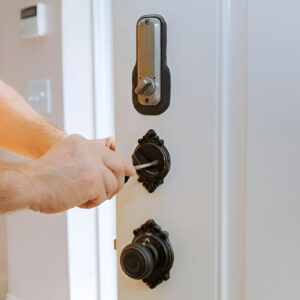As vehicles become more intelligent and complex, ensuring the reliability of embedded systems has never been more critical. This is especially true in the AI in automobile industry, where advanced control systems and safety features require precise and exhaustive validation. One key technique making this possible is Hardware-in-the-Loop (HIL) testing—a simulation-based approach that allows for safe, repeatable, and real-time testing of embedded systems.
In this blog, we’ll break down what HIL testing is, how it works, and why it’s vital in industries such as automotive, aerospace, and robotics, especially in applications involving autonomous driving levels and adaptive cruise control.
What is Hardware-in-the-Loop (HIL) Testing?
Hardware-in-the-Loop (HIL) testing is a real-time simulation technique used to test embedded control systems by connecting them to a simulated physical environment. Instead of waiting to test on a real vehicle or machine, HIL lets you plug the actual hardware (like an ECU or sensor system) into a digital simulation that mimics real-world inputs and outputs.
In simple terms:
The hardware in the loop test allows engineers to test real components in a safe and controlled virtual environment, without risking failure in a real-world scenario.
Why is HIL Testing Important?
Modern vehicles include numerous electronic control units (ECUs), from engine management systems to adaptive cruise control and lane-keeping assist. Testing these ECUs individually or in combination is essential before integrating them into a vehicle.
Here’s why hardware in the loop is essential:
- Reduces risk and cost by eliminating early physical prototypes
- Improves testing repeatability under controlled conditions
- Speeds up development through early-stage validation
- Enables complex scenario testing, such as edge cases in autonomous driving levels
How Does Hardware-in-the-Loop Work?
The HIL simulation environment includes three key components:
- Real-Time Simulation Software: Simulates the vehicle or physical system’s behavior.
- Interface Hardware (I/O Systems): Converts signals between the simulation and the control system.
- The Device Under Test (DUT): This could be an ECU, sensor module, or control board.
For example, in a hardware-in-loop HIL simulation for adaptive cruise control, the simulated environment might feed virtual road speeds and distances to the ECU, while engineers observe how the control unit adjusts throttle and braking in real-time.
This approach ensures that the software and hardware work seamlessly together before moving to real-world testing.
HIL Testing in Autonomous Vehicles
As cars move toward full automation, the number and complexity of systems that require testing increase dramatically. Testing the levels of autonomous cars (from Level 1 driver assistance to Level 5 full automation) involves validating thousands of potential driving scenarios.
Here’s how HIL testing supports autonomous driving levels:
- Sensor Simulation: Simulates LiDAR, radar, and camera inputs
- System Integration: Tests how ECUs interact in multi-system environments
- Fail-Safe Validation: Tests how systems respond in fault conditions
- Traffic & Obstacle Scenarios: Simulates real-world driving environments, from highways to urban intersections
Because testing autonomous cars entirely in the real world would be dangerous and time-consuming, hardware in the loop helps simulate those exact conditions safely and repeatedly.
Benefits of Hardware-in-the-Loop Testing
- Early Detection of Bugs: Catch errors in control logic before integration
- Better Product Quality: Robust testing improves system reliability
- Faster Time-to-Market: Shortens the overall product development cycle
- Cost Efficiency: Reduces the need for expensive prototype builds
- Scalability: Easily expands to test complex vehicle networks or multiple ECUs
Companies in the AI in the automobile industry use HIL testing as a key part of their validation pipeline, especially for technologies like adaptive cruise control, driver monitoring systems, and smart braking.
Frequently Asked Questions (FAQs)
What is the main purpose of HIL testing?
HIL testing is used to test embedded control systems in a real-time, simulated environment without the need for a fully built physical system. It ensures reliability, safety, and performance before real-world deployment.
How does HIL testing support autonomous vehicle development?
It simulates driving conditions, sensor data, and system interactions to validate how autonomous systems behave in real-world scenarios, essential for ensuring safety at every level of autonomous car development.
Is HIL testing only used in the automotive industry?
No. While HIL testing is widely used in automotive development, it is also critical in:
- Aerospace (flight control systems)
- Renewable energy (inverter and grid systems)
- Railways and industrial automation
- Robotics and heavy machinery
What’s the difference between HIL, SIL, and MIL testing?
- MIL (Model-in-the-Loop): Tests software models
- SIL (Software-in-the-Loop): Tests compiled code on a PC
- HIL (Hardware-in-the-Loop): Tests real hardware with a simulated environment
HIL is the final testing stage before real-world trials.
How scalable is a hardware-in-loop test setup?
HIL systems are highly scalable, from single ECU testing setups to large networked systems involving multiple ECUs, domain controllers, and sensor inputs, especially for testing systems at autonomous driving levels.
Conclusion
As the automotive industry accelerates toward smarter, safer, and more autonomous vehicles, hardware-in-loop test techniques like HIL are becoming indispensable. From validating critical safety systems to simulating complex AI-driven environments, hardware in the loop offers engineers the tools they need to build and test smarter vehicles safely, efficiently, and cost-effectively.
Whether you’re working on adaptive cruise control or advancing through the levels of autonomous cars, HIL testing ensures that innovation never comes at the cost of reliability.





